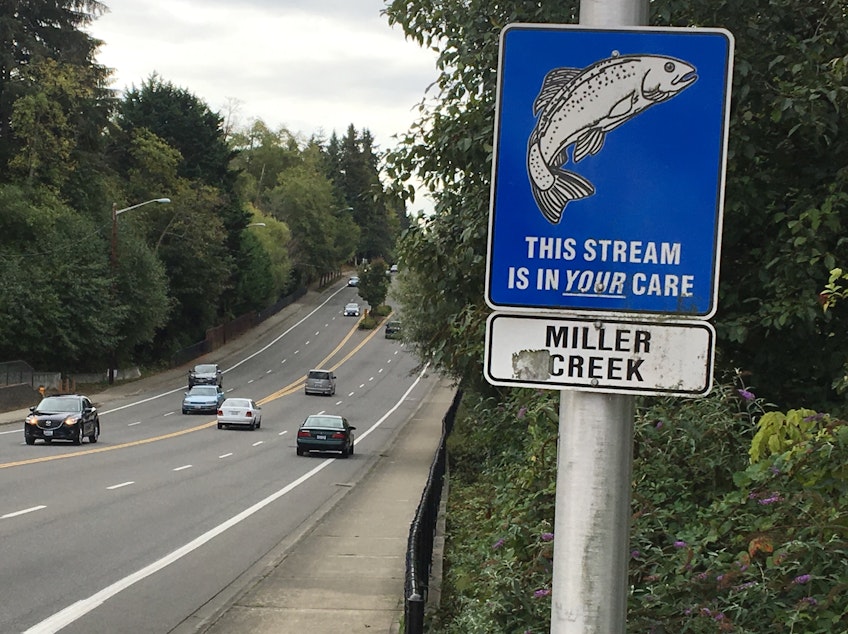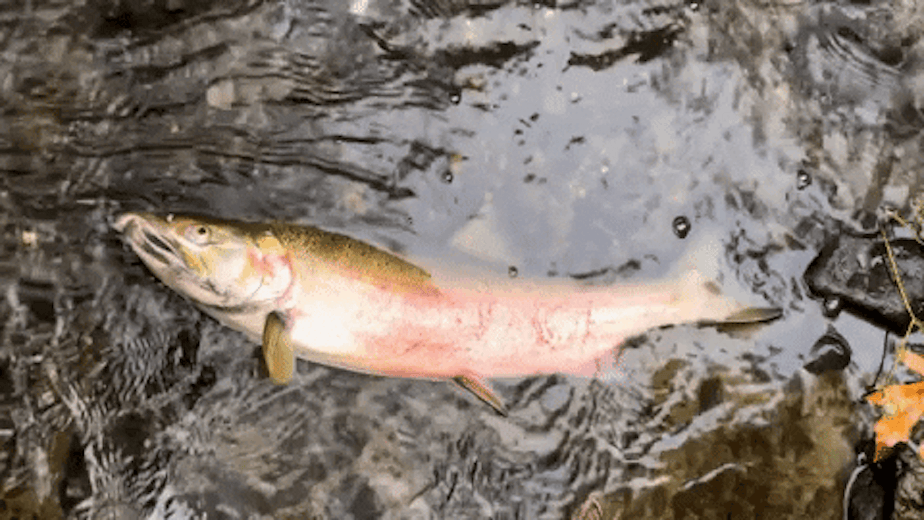Seattle fish research could shake up global tire industry

Electric vehicles have clear environmental benefits over gas-powered cars, yet all cars and trucks are polluters when it comes to their tires.
Research in Seattle-area creeks has discovered tire bits shedding lethal amounts of a little-known, salmon-killing chemical called 6PPD-quinone.
That research has led California officials to start regulating 6PPD, the tire-rubber stabilizer that degrades into toxic 6PPD-quinone, with consequences that could reverberate around the world.
The California Department of Toxic Substances Control is expected to issue a draft rule in May requiring tire manufacturers to look for alternatives to 6PPD.
“6PPD-quinone is among the most toxic chemicals that we know of for aquatic life,” Jenifer McIntyre, an ecotoxicologist at Washington State University in Puyallup, said at the Salish Sea Ecosystem Conference in April.
Chemist Craig Manahan with the Washington Department of Ecology said the problem is widespread.
“As far as we know, 6PPD is used in all tires and pretty much all flexible rubber parts,” Manahan said.
Dozens of researchers from institutions including the University of Washington, Washington State University, and the National Oceanic and Atmospheric Administration have spent decades sleuthing for what was killing most coho salmon before they could spawn in creeks above Puget Sound.
In December 2020, 27 coauthors published an article in the journal Science identifying 6PPD-quinone as the coho killer. Within weeks, the U.S Tire Manufacturers Association asked California officials to treat tires with 6PPD as a priority under the state’s toxic-chemical laws.
Coho salmon is an endangered species in California.
The California rule, once finalized, would give manufacturers of tires sold there 180 days to assess any known or potential alternatives to 6PPD in tire rubber.
“The hope is that the work that we're doing with 6PPD in motor vehicle tires will have impacts across the nation, across the world,” said environmental scientist Anne-Cooper Doherty with the California Department of Toxic Substances Control.
“Any replacement to 6PPD will likely be incorporated not only in tires sold in California, not only in tires sold in the United States, but likely globally,” said attorney Sarah Amick with the U.S. Tire Manufacturers Association.
“Our supply chains are global supply chains,” Amick said.
In other words: Studies of fish in a few polluted creeks near Seattle could shake up a global industry.

Tire rubber is a chemical hodgepodge of hundreds of different substances. Virtually all tires on the road are 1% to 2% 6PPD by weight, according to University of Washington environmental engineer Ed Kolodziej.
“If you buy a set of tires for your car, you're probably buying about 100 pounds of rubber, and you might be buying roughly one pound of 6PPD within that rubber,” Kolodziej said.
Researchers and industry officials warn it could take years of thorough analysis to find safer materials that work as well as 6PPD.
“It's used because it's the most effective at its job,” Amick said. “It prevents rubber from breaking down and degrading and also resists heat buildup, which is critical for tire safety.”
The Washington Department of Ecology is testing six alternatives to 6PPD for their toxicity to coho salmon, according to the department’s Craig Manahan.
He said the agency lacks information on the safety or on-road performance of those alternatives.
“We don't have any authority as Ecology to require this information from manufacturers. So we're totally dependent on the manufacturers to provide the data and information willingly,” Manahan said.
Amick, the tire manufacturers association attorney, said the group supports the West Coast states’ push for safer tire ingredients.
“Tires are contributing literally, we think, thousands of chemicals into water when a little bit of tire rubber soaks in water,” Kolodziej said. “We need to get to a salmon-safe tire.”
A recent study of microplastics by the San Francisco Estuary Institute and the 5 Gyres Institute found trillions of apparent tire bits in runoff heading for San Francisco Bay and sediment beneath the bay.
“Nearly half of the particles from field samples were black fragments that had a distinctive rubbery texture when handled with tweezers,” the report states.
Though the researchers were unable to identify the composition of the black, rubbery particles, they resembled rubber fragments identified by spectroscopy studies, suggesting that car tires are the leading source of microplastics in that arm of the Pacific Ocean.
“That makes all that driving we do something to think about, not just in the Bay Area, but any setting where there are cars,” San Francisco Estuary Institute chemist Rebecca Sutton told the Los Angeles Times.
To help tires — and maybe salmon runs — last longer:
• Drive less. Fewer miles driven equals less tire dust.
• Keep tires properly inflated and maintained.
• Drive less aggressively: Don’t “lay rubber” when accelerating or braking.
• Drive small. Small cars shed about half as much tire dust per mile as large cars, according to European studies. Trucks shed several times more.

